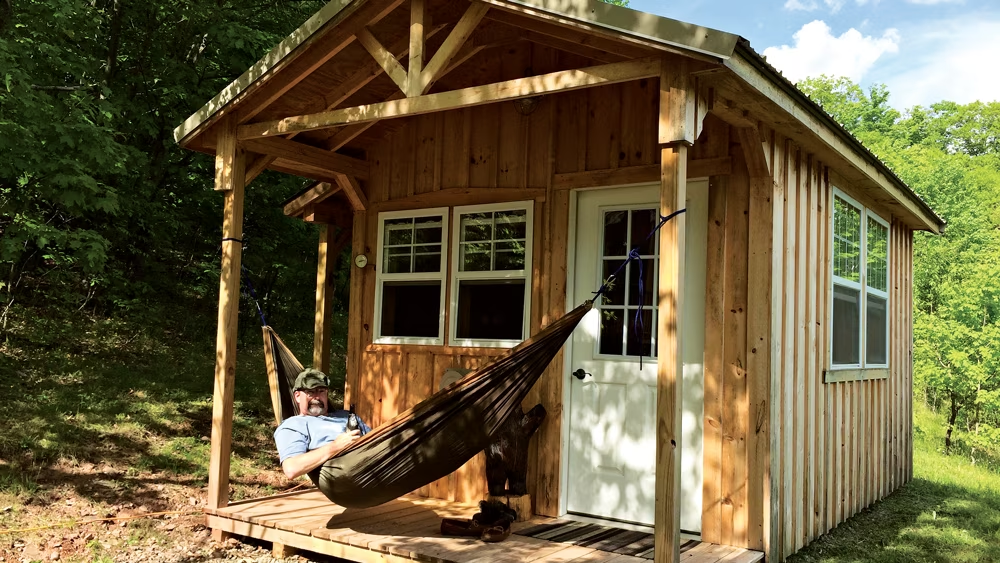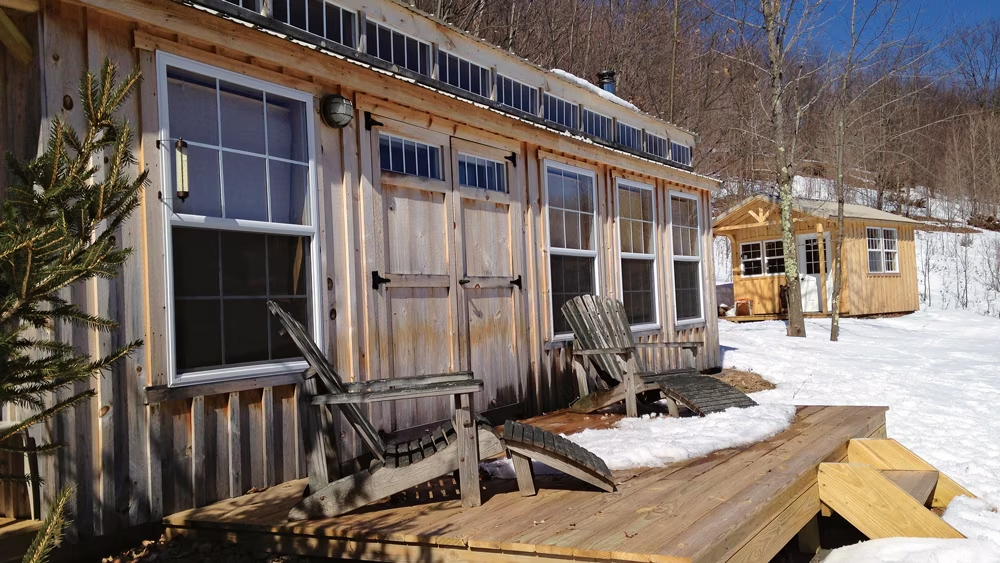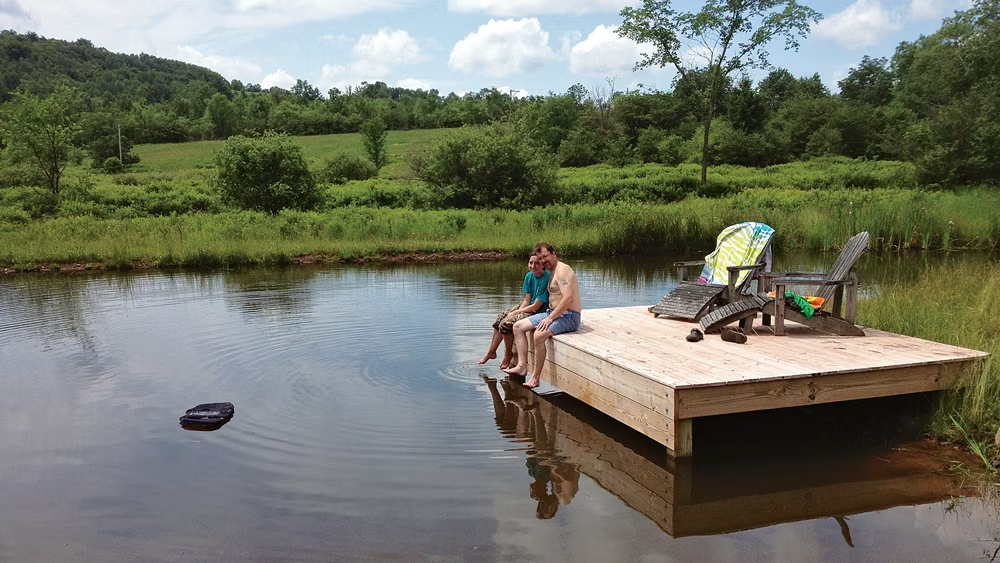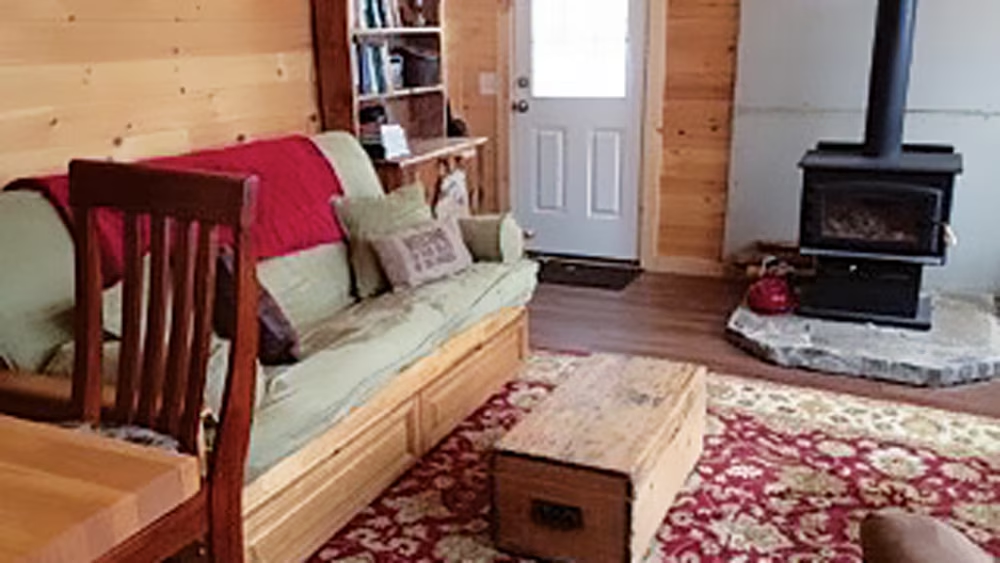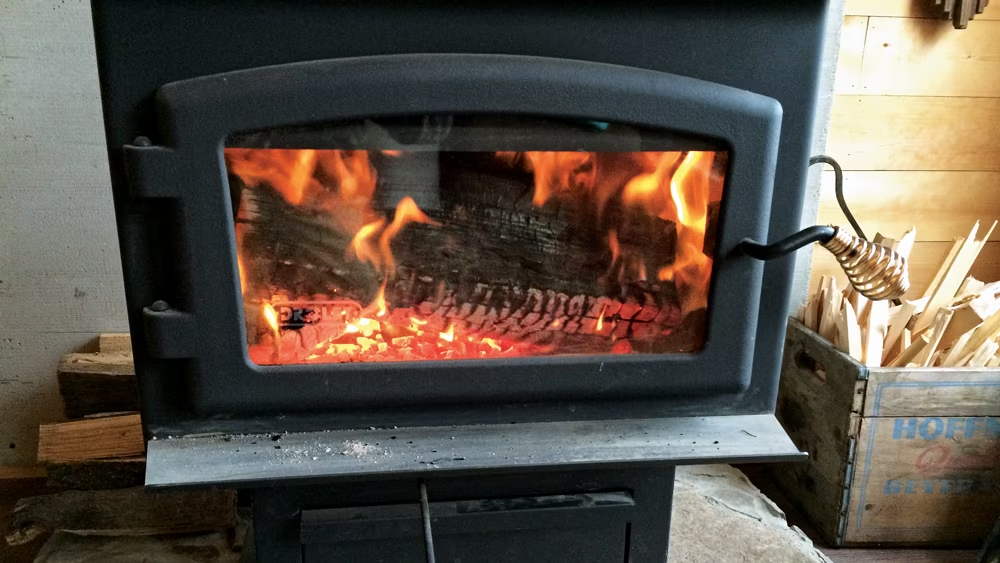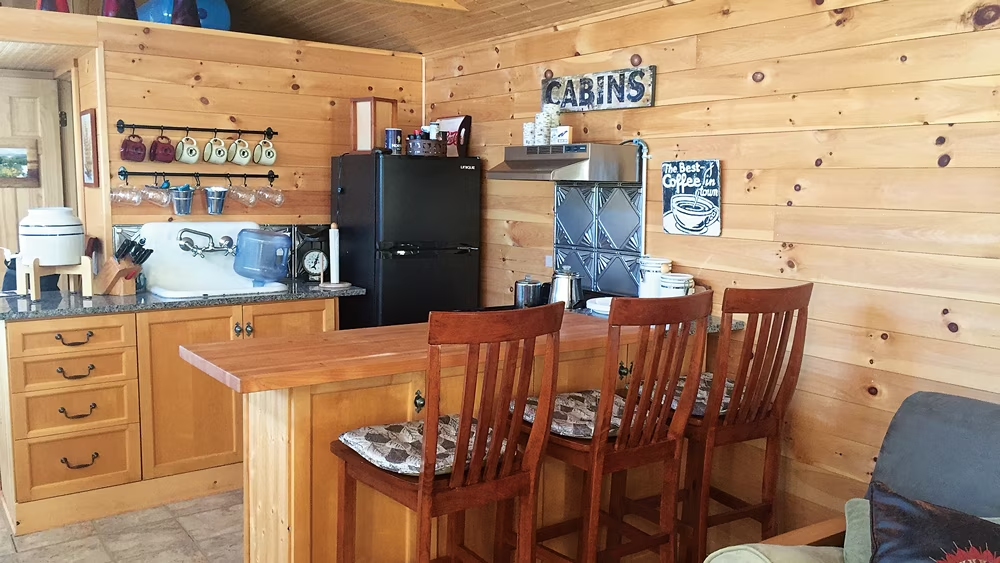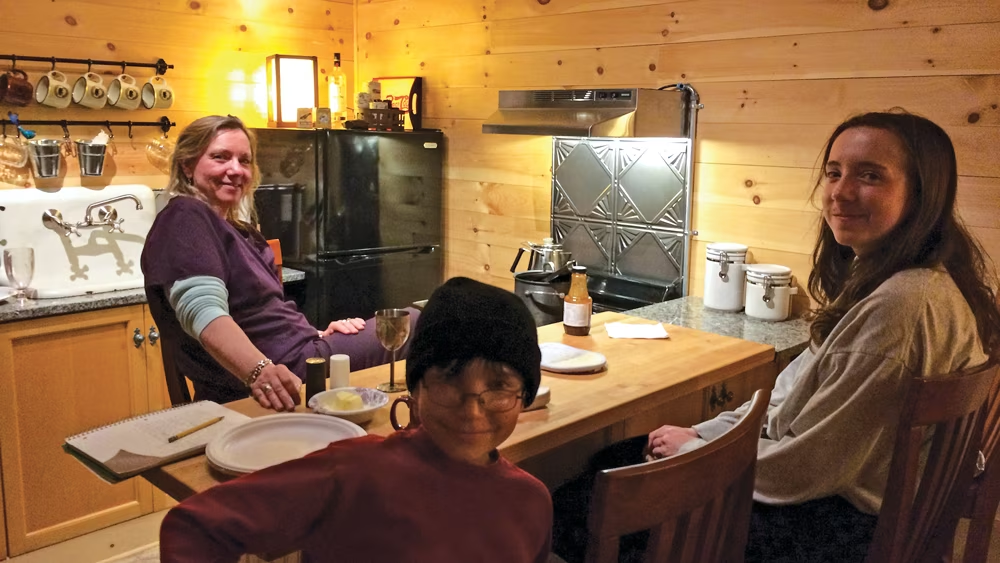Photo: Courtesy the Hoffmans
Ken and Laurie Hoffman own the perfect spot for off-grid cabin living. Their New York retreat has a beautiful southern exposure, with full sun from dawn to dusk. “It’s ideally situated for solar gain,” notes Ken.
But the real reason the couple purchased the lot was for the spectacular view. Situated on a hillside, it overlooks the Catskill Mountains to the south.
Even before their daughter, Kady, was born, the Connecticut couple would drive through the Catskills looking for a country place. The region is only a couple hours from their home on the New York/Connecticut border. In 2008, Laurie contacted New York Land & Lakes, an upstate company that sells rural property acquired through farm liquidations. Once the agent showed them the 15-acre parcel in Delaware County, the long quest was over.
The Hoffmans immediately laid a dirt driveway and cleared trees for a camping spot. Since Ken had just started a medical practice (he’s the director of Sophia Natural Health Center in Brookfield, Conn.), the budget was tight. The family of four – the couple also have a teenage son, Jesse – slept in tents. That is, until a too-close encounter with coyotes prompted Ken to buy a used RV.
The Hoffmans credit their chocolate Labrador retriever for the idea of – or at least, the inspiration for – the swimming pond. When the couple first walked the property, they noticed Bodhi rolling in a puddle. Turns out the soggy area was due to a natural spring. “We had to jump through hoops to get permits, because the property is in the Delaware River watershed,” notes Laurie. But eventually, they were able to create a half-acre pond about 15 feet deep at the center. The spring-fed pond is cool year-round and stocked with massive bass, eager to bite. “My son looks like Opie,” Ken laughs. “He just takes a stick from the woods and dangles a string with a hook on it.”
In 2013, the couple purchased a 14x30-foot customized cabin from the Amish Barn Company in nearby Oneonta. “I designed it to take advantage of the views,” says Laurie, who added more window panes to the front, including a row of eyebrow windows along a shed dormer. The windows also pull light into the cabin and act as passive solar collectors. Ken built the hearth from local rocks and hired a local carpenter to finish the interior. The cabin serves as the main living space, with a kitchen, bathroom, front deck and covered side porch where the family eats. The kitchen is equipped with a 24-inch Premier propane stove with battery spark ignition, a Unique propane refrigerator and a Bosch on-demand, non-electric water heater.
Separate sleeping quarters are in two 10x14 cabins: a master for Ken and Laurie with a queen-size bed and bathroom and the other with 2 sets of bunk beds and a futon for the kids. Both are within 20 feet of the main cabin and have nonelectric propane heaters. “We basically have a full house, broken into pieces,” laughs Ken.
The project took over a year to complete. “We didn’t want to go into debt, so it was incremental,” he explains. Meanwhile, he read all he could about off-grid components and kept a binder of information accumulated from home shows, the Internet and issues of Cabin Living.
“My job was infrastructure, Laurie’s was aesthetics,” says Ken. “I’ve always been fascinated with the off-grid concept. I wanted it all off-grid, but modern.”
He started small with a 45-watt solar panel kit including a charge controller plus a 12-volt, deep-cycle battery. He then converted the Simple hand pump for the well to a motorized, battery-operated pump. Another 45-watt panel set-up runs the fans 24-7 on the composting toilets (a Separett in the main cabin and a Nature’s Head in the primary cabin).
The solar systems are low to no maintenance, says Ken. “If extra power is necessary, we use the generator to top off the batteries.” He owns a gas generator but recently purchased a portable Humless solar generator. However, “good solar gain, a well-designed cabin with lots of windows and no electrical draw except for LED lights means we rarely use it,” Ken says.
The family spends time at the retreat year-round. “It’s so convenient for us,” says Laurie. “I find that being able to leave on a Friday to be up for there dinner and stay for the weekend is better than a long vacation,” adds Ken. “Sometimes I just like to sit on the porch with a cup of coffee and admire the view. I have a busy practice, and it’s nice to have some quiet time.”
The family hikes from spring through fall on nearby trails and goes sledding and snowshoeing in winter. They also practice outdoor wilderness skills like foraging and tracking. Away from the cabin, they enjoy farm festivals and farmer’s markets, as well as local antique stores.
Eventually, Ken plans to build a larger vacation cabin that he and Laurie can retire to one day. That one will also be off-grid and have a full solar system including four pole-mounted 250-watt panels and a battery bank. But for now, the current arrangement works just fine.



